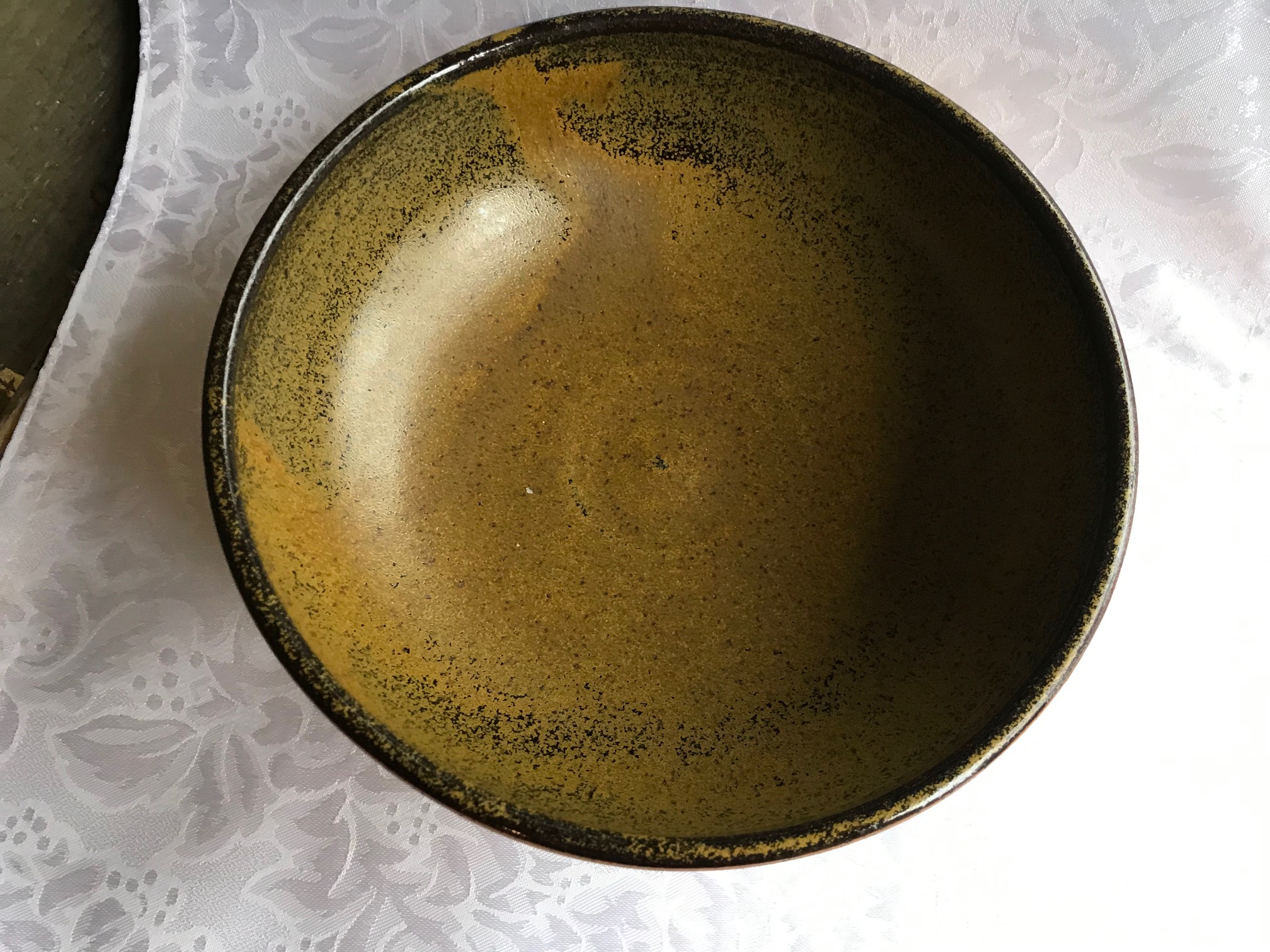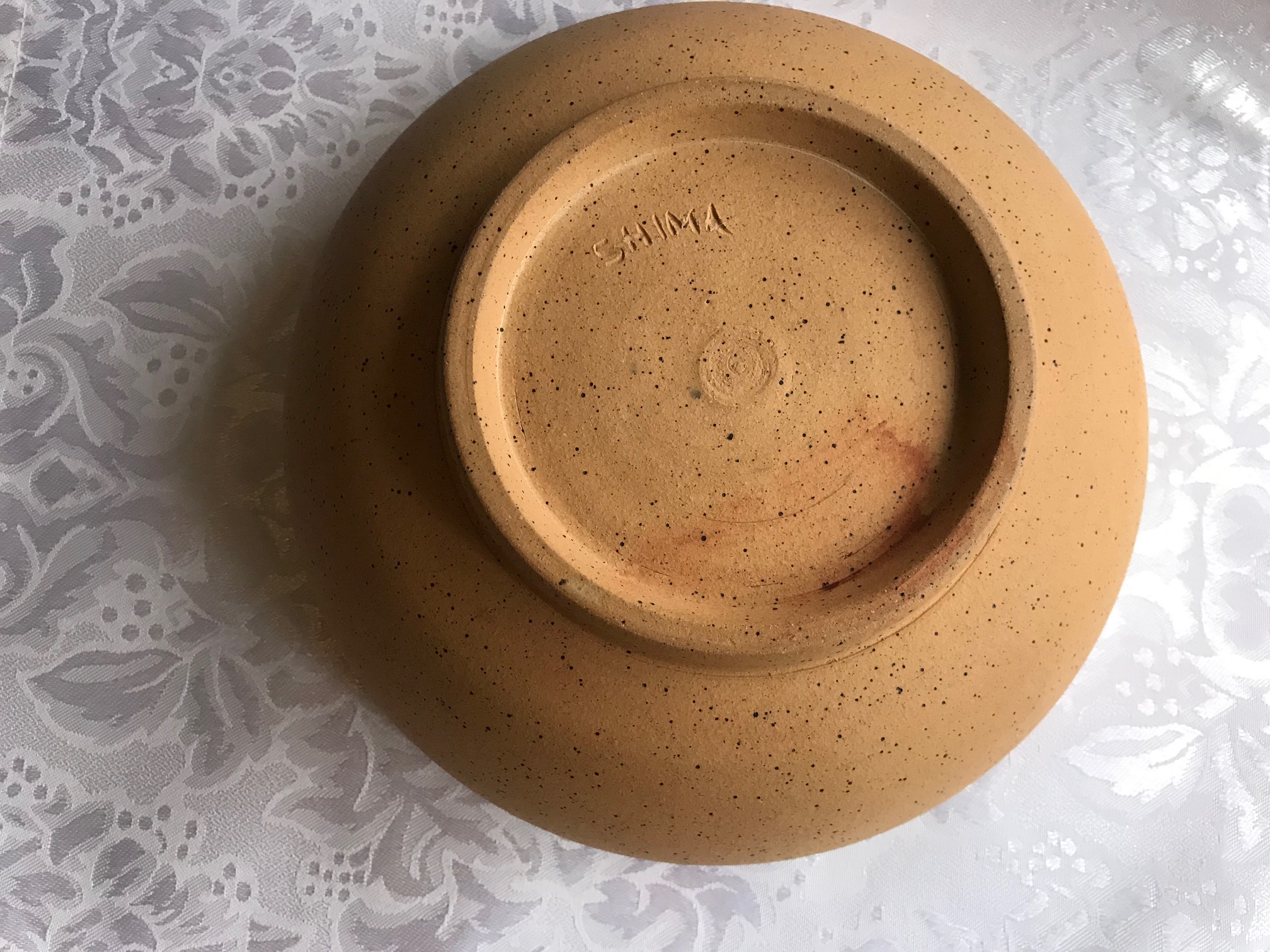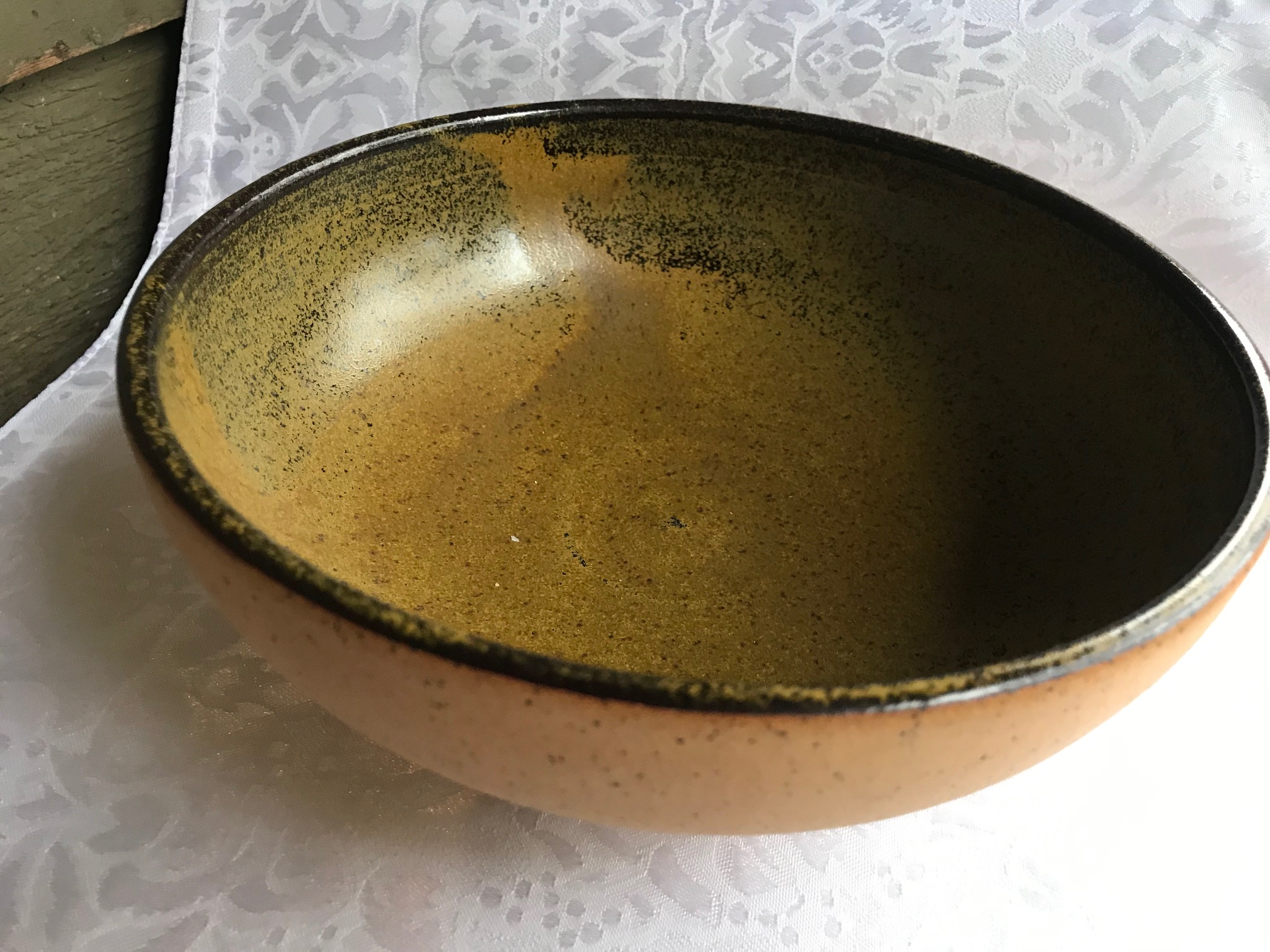Unmarked Handmade Brown Glazed Ceramic Bowl: 91 ppm Lead (Lead-Safe)
This bowl is handmade and has the name “Shima” handwritten on the bottom. It was given to me to test from a friend in Canada. I do not currently have more information about it. When tested with an XRF instrument it had the following readings…
Brown Glazed Interior:
(Each test done for at least 60 seconds. Tests done multiple times to confirm any results where toxicants were present.)
- Lead (Pb): 30 +/- 11 ppm
- Mercury (Hg): Non-Detect / Negative
- Arsenic (As): Non-Detect / Negative
- Cadmium (Cd): Non-Detect / Negative
- Barium (Ba): 1,029 +/- 62 ppm
- Chromium (Cr): Non-Detect / Negative
- Antimony (Sb): Non-Detect / Negative
- Selenium (Se): Non-Detect / Negative
- Zinc (Zn): 10,400 +/- 400 ppm
- Copper (Cu): 116 +/- 39 ppm
- Iron (Fe): 47,500 +/- 1,300ppm
- Vanadium (V): 177 +/- 29 ppm
- Titanium (Ti): 335 +/- 45 ppm
- Manganese (Mn): 574 +/- 204 ppm
- Zirconium (Zr): Non-Detect / Negative
- Indium (In): Non-Detect / Negative
- Platinum (Pt): Non-Detect / Negative
Continue reading below image.
Unglazed Exterior (base clay/ substrate – see image above):
- Lead (Pb): 91 +/- 15 ppm
- Mercury (Hg): Non-Detect / Negative
- Arsenic (As): Non-Detect / Negative
- Cadmium (Cd): Non-Detect / Negative
- Barium (Ba): 1,288 +/- 65 ppm
- Chromium (Cr): Non-Detect / Negative
- Antimony (Sb): Non-Detect / Negative
- Selenium (Se): Non-Detect / Negative
- Zinc (Zn): 156 +/- 27 ppm
- Copper (Cu): Non-Detect / Negative
- Iron (Fe): 18,400 +/- 700 ppm
- Vanadium (V): 705 +/- 69 ppm
- Titanium (Ti): 6,717 +/- 281 ppm
- Zirconium (Zr): Non-Detect / Negative
- Indium (In): 20 +/- 10 ppm
- Platinum (Pt): 109 +/- 41 ppm
This level of Lead is considered safe by all standards.
Since, when tested with an XRF instrument, the bare ceramic has a higher level of Lead than the glazed area of the piece (91 ppm vs. 30 ppm), it is possible that the glaze is Lead-free and the XRF instrument reading of a lower level of Lead on the glaze is actually the instrument reading through Lead-free glaze to the Leaded substrate underneath.
It is impossible to know if this is actually the case without testing the glaze and substrate separately, however this is a reasonable conclusion to draw (as an educated guess) on a piece like this. Most potters making handmade artistic pieces these days are choosing Lead-free glazes and the trace Lead found in some of the substrates is usually within safe range. This has also been the case with the testing I have done on pieces from some of the larger modern/current brands of handmade pottery (like Emerson Creek Pottery pieces).
Would you like your things tested (with the results posted here on this website?) Here’s a link with how you can participate in this work: LINK.
Thank you for reading and for sharing these articles.
As always, please let me know if you have any questions.
Never Miss an Important Article Again!
Join our Email List





